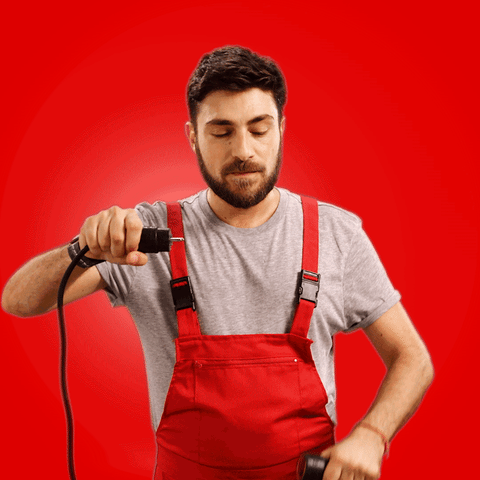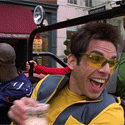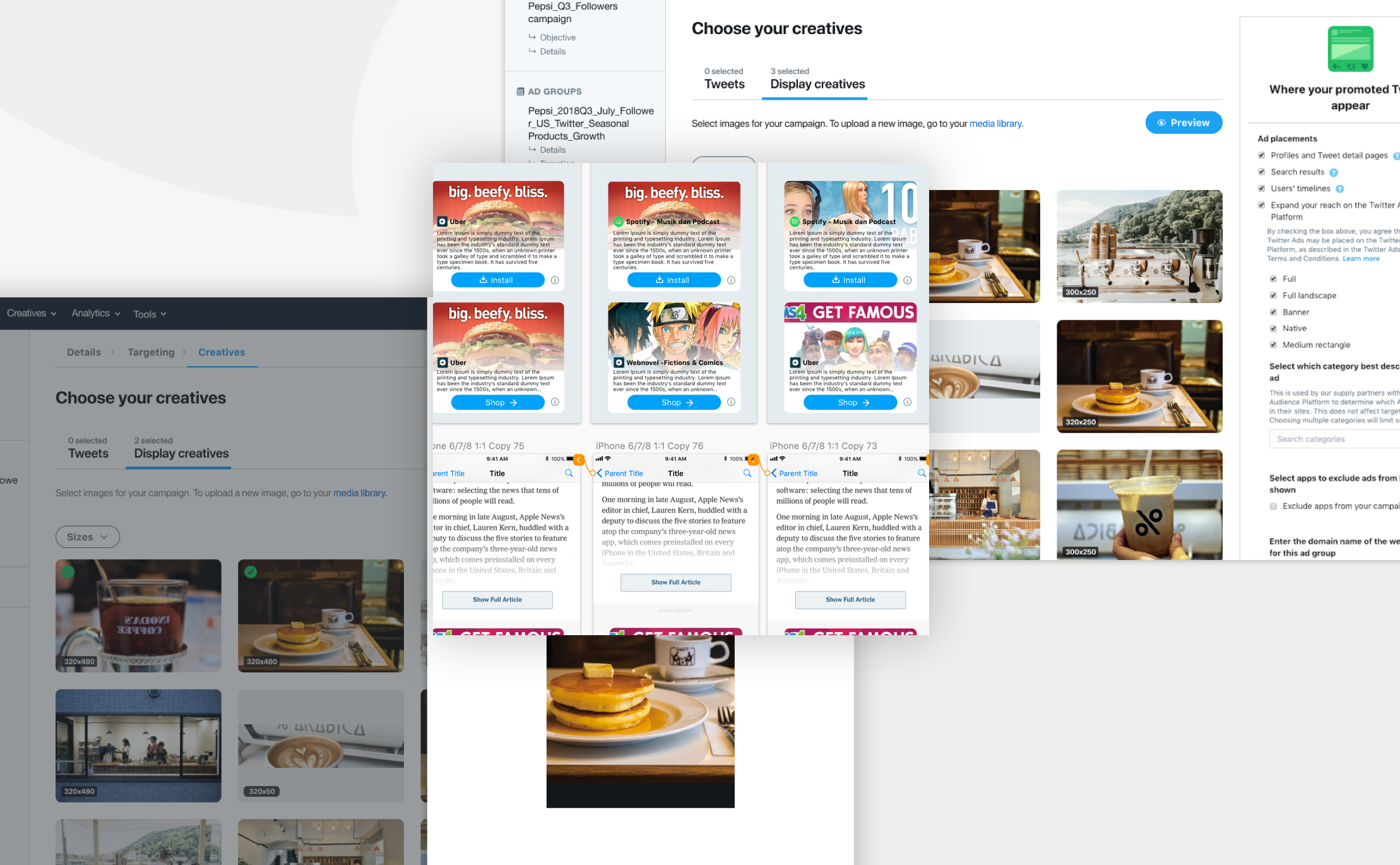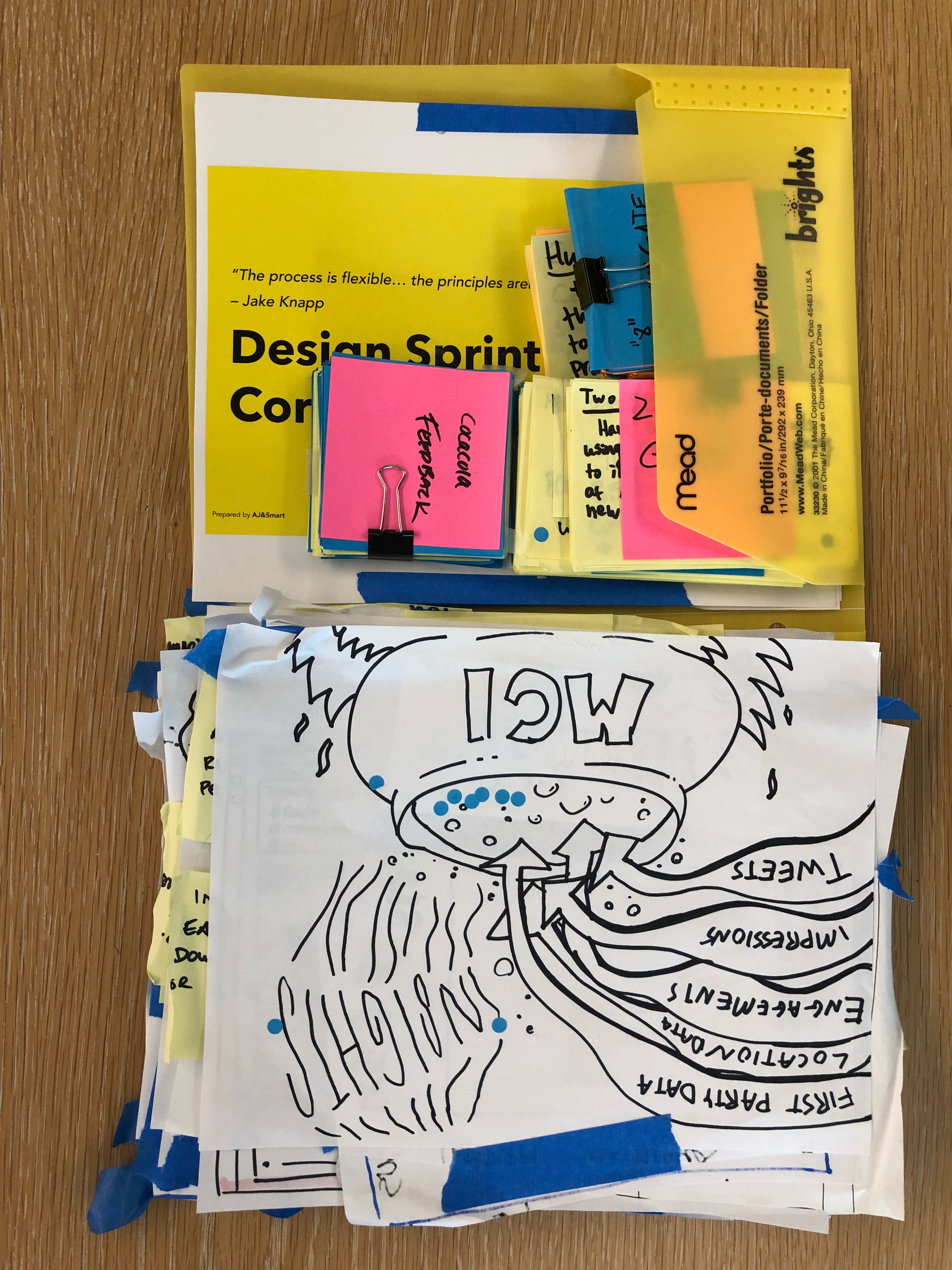
You probably have seen those Tweets which are funny, inspiring, or...look so good that make you hungry in the late evening. And then you noticed that some of them are promoted by brands like Burger King or Coca-Cola. But... wait, why do you see those ads? How do advertisers know you are craving burgers and also want a iced coke in hand?
Who needs one last vacation before summer ends? Even if it’s just a tiny one. pic.twitter.com/N0dB15U6sF
— Coca-Cola (@CocaCola) August 29, 2019
🧀👤🙌 pic.twitter.com/yoXZmNMPQT
— Burger King (@BurgerKing) November 25, 2018
This is major. The @marshmellomusic x @FortniteGame extended mix is officially here. Listen now: https://t.co/mv4MwR8Y1d pic.twitter.com/HIKF09aT4w
— Apple Music (@AppleMusic) February 2, 2019
Twitter is a place where magic happen, but it doesn't always happen by accident. Our job is to help advertisers better target their customers, serve high-performance ads, and make their businesses more successful.
As a product designer, I cooperate with co-designers, researchers, PMs on cross-functional teams. We analyze data and feedback from our customers, understand their needs and goals, find solutions to help them get their job done. As a team, we work together to find out what are the high impact opportunities, and identify low hanging fruits v.s long terms goals so we could move efficiently.
Due to the complexity of our ads products, I'll talk more about high-level problems to solve, user journey, design process, and offer you a glance of the solutions. If you are interested in this project, please contact me for more details.
All types of advertisers have a similar journey, which is plan, build, optimize, and report. No matter they are large brands that want to leverage their brands, companies that want to grow rapidly and drive sales quickly, or small businesses that want to gain more installs/awareness. Advertisers plan on their budgets, target users, and creatives ahead of the time, and then build campaigns to run ads on the Twitter platform. After a period of time, they'll optimize performance based on campaign results to understand their customers better. And with the knowledge, they can better target their customers and run better ads in the future.
Learn more about JTBD (Jobs to be done) here.

Even though all the advertisers have the similar life journey cycle, they still have different goals and intentions. It will lead to different mental model & workflows, since each advertiser cares about different data and metrics. To serve multiple types of users, we need to think about end to end experience and test workflows in different scenarios.


We also keep learning from our customers. We become customer centered by understanding their Jobs to be Done. But as a product designer who is designing for advertisers, sometimes it's hard to do immersive user research. So... what do we do?
Get experts on board. We cooperate with researchers, product managers, account managers and sales people to dig into their world and understand what are their JTBD.

After we understand why do they "get a smoothie at 8am". Then from there, we know that "People don't want to get a smoothie at 8 am, they want something to do during the long distance drive". In our user case, people hire Twitter because they want to sell their products, express branding value and reputation. So our goal is to help them get these jobs done.

To solve complex problems, we need solid domain knowledge of how does advertising business work. What data users care about, how do they decide budget, how do they do AB testing, what goals they are trying to achieve, who they work with, and more.
After we gather a list of problems that need to be fixed, we need to work as a team to workshop and priotize them. We need to make sure we are solving the right problems in the right way, and invest our resource on the most important product areas.

When improving complex products, we also need to analyze data and metrics that can help us to get information from advertisers, so we are more confident about whether we are on the right direction. Also, when there are multiple types of users are involved, we need to balance the products needs and focus on our high-value users.
Designing for advertisers is hard, but there are other challenges besides that. When designing for advertisers, I also need to understand how does the Twitter business model work, how do we serve ads, and how do ads influence our consumer products. As a team, we work together to run experience ads, A/B test them and find the high performance design patterns that not only bring better results to advertisers, but also serve customers with cleaner and nicer content that interest them.

During the design sprint or usability research process, we'll have opportunities to talk with real end users and observe them while they play with the prototypes. We'll setup tasks for them to finish, or we ask them to do their daily tasks on our platform with the new workflow/design. It's very inspiring to hear from real users, and they usually have tons of insides that can help us understand the pain points and their mental model and thought patterns, which I can bring back to my design and make it work better for our users.

To deeply understand the problems and seek for a right direction to solve them, design sprint is a good way to find the direction of solution when things are still a little blury. Or at lease we can learn customer insights from it.

To experience more, go to your Twitter account and register for a Twitter Ads account.
Go to Twitter